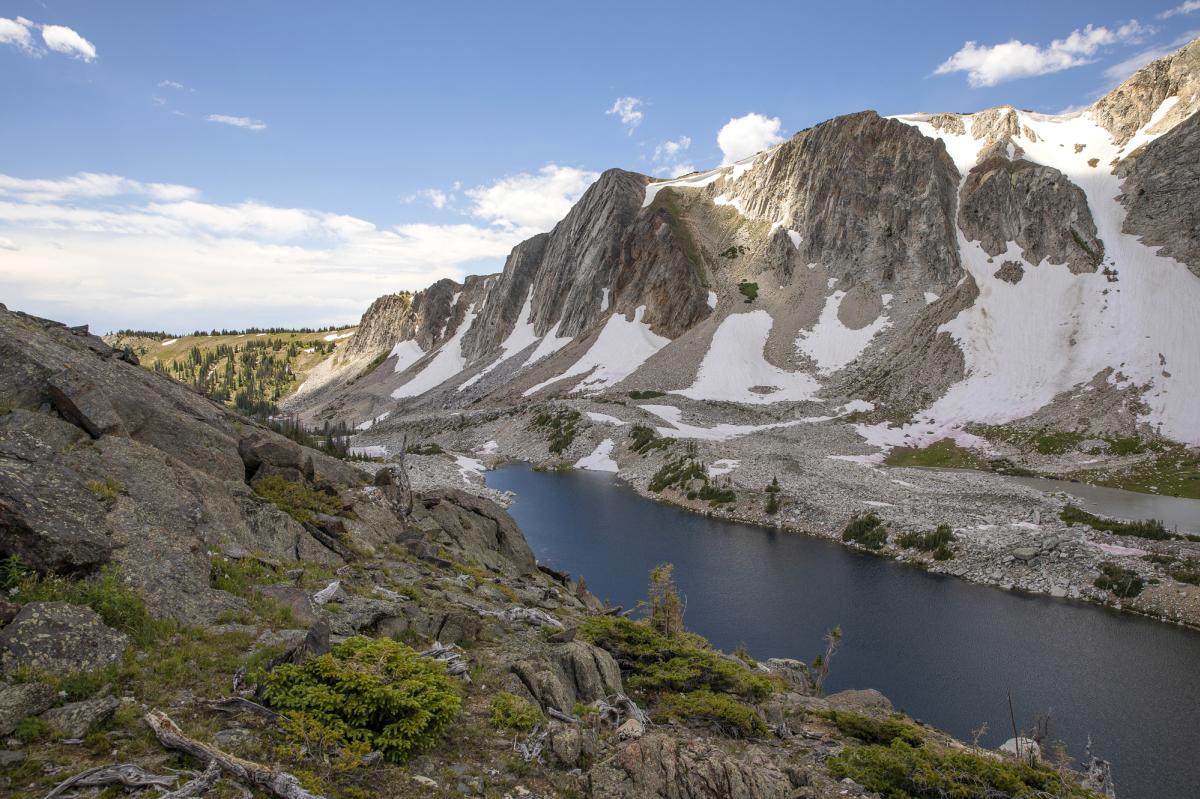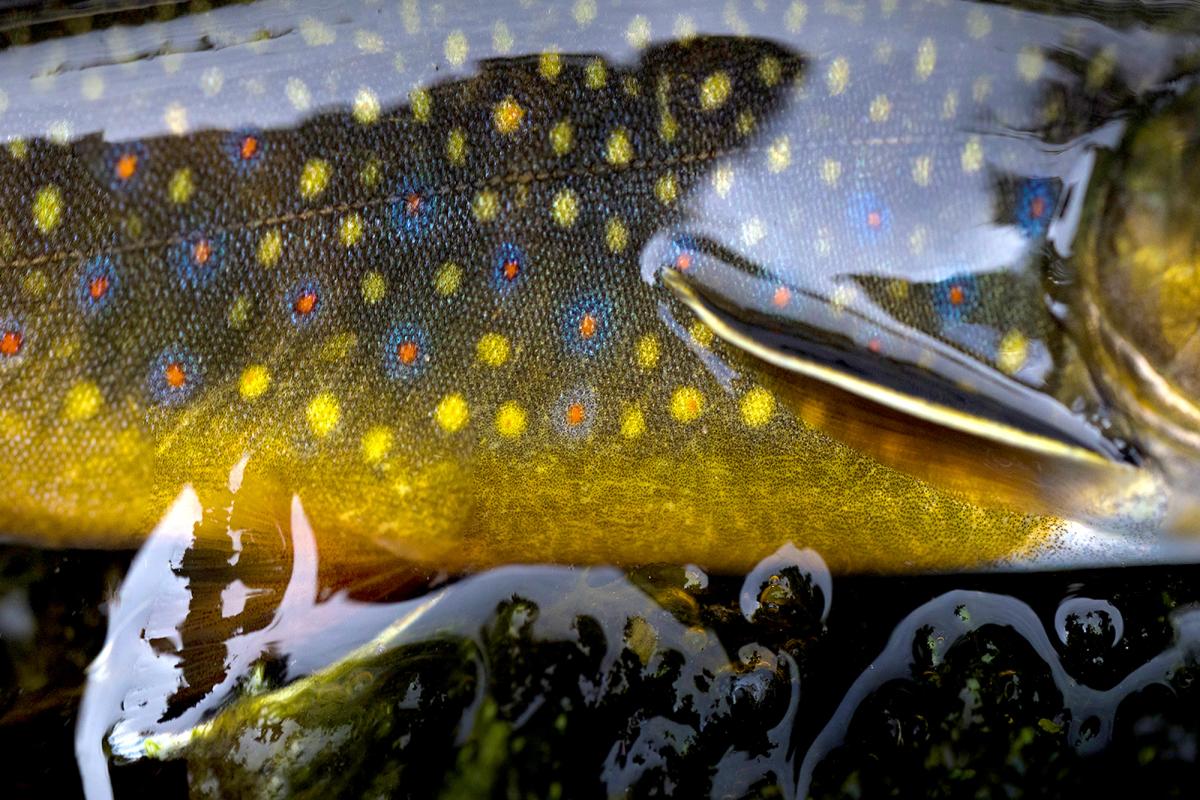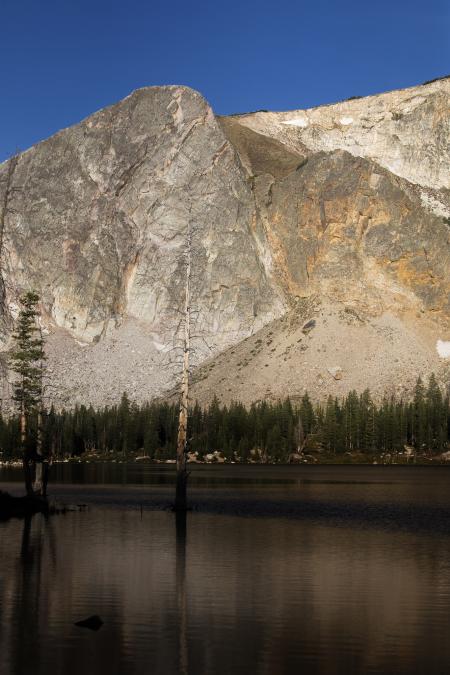To many locals and visitors alike, the Snowy Range Mountains are the shining star of Laramie’s great outdoors. Located just 35 miles west of Laramie, this range, colloquially known as the “Snowies,” forms part of the Medicine Bow-Routt National Forest of the renowned Rocky Mountains.
The Snowy Range was shaped by a rich glacial history that has left breathtaking scenery in its wake. Glowing quartzite peaks loom high in the sky, forming a stunning backdrop to the 100-plus pristine lakes spread throughout the landscape. Expansive forests, meadows, and alpine tundra are all found in the Snowies, and many mountain-dwelling creatures, including pica, marmots, foxes, moose, and, less frequently, black bears, call these areas home.
How can you experience this beautiful range? The options can leave you dizzy, but we’ve summed up our favorite can’t-miss activities for you here, being sure to include ideas for every season.

Hike Medicine Bow Peak
While there are many amazing hikes in the Snowies, you can’t miss the opportunity to climb Medicine Bow Peak, which is as notorious for being the highest point in southern Wyoming as it is for its inspiring views. The peak looms just above 12,000 feet and gifts those who reach its top with stunning, unobstructed vistas of the entire range and surrounding valleys.
Varying in distances from a little over a mile and a half to over seven miles, there are four trailheads that will lead you to Medicine Bow Peak: Lake Marie Trailhead, Mirror Lake Trailhead, Lewis Lake Trailhead, and Dipper Lake Trailhead. The Lake Marie loop (via the Lakes Trail) is the longest and most gradual route and our personal favorite. Follow the trail clockwise for views of the peaks with the lakes in the foreground. For the shortest and most direct route, the Lewis Lake Trailhead takes you straight to the peak in 1.6 miles.

Go Trout Fishing
The Snowy Range is full of pristine alpine lakes, and fortunately, many of these lakes are also brimming with trout. While fishing in the Snowies isn’t likely to land you the trophy catch of your life (high elevation lake trout tend to be smaller), size isn’t the only thing that matters when it comes to fishing.
Fishing in the Snowy Range is truly a serene experience. The scene is one with wildflowers at your feet, fly rod in hand, towering peaks on your horizon, and crystal-clear waters before you. Colorful brook trout are the most abundant species, but you’ll also find brown trout, cutthroat trout, rainbow trout, golden trout, and more.
For the most easily-accessed fishing, look no further than Mirror Lake and Lewis Lake, both of which are located off major trailheads right off the highway. But so long as you’re up for a bit of hiking, the Gap Lakes earn our top recommendation for fishing. The Gap Lakes Trail is 2.8 miles long, accessed via the Lewis Lake Trailhead. After Lewis Lake, South Gap Lake is the first lake that comes into view, followed by North Gap Lake. If you have a full day, consider hiking into the Shelf Lakes as well by continuing on the trail that departs along the shore of North Gap Lake.

Beat the Winter Blues at the Snowy Range Ski Area
The Snowy Range is full of winter recreation opportunities, and chief among them is downhill skiing and snowboarding at the Snowy Range Ski Area. Nestled in the heart of the range, the Snowy Range Ski Area offers fantastic and affordable winter recreation for skiers and snowboarders of all ages and skill levels. Its lift ticket prices ring up at less than a third of other resorts near the area, and smaller crowds mean you’ll spend less time waiting in long lift lines and more time out on the slopes.

Experience World-Class Snowmobiling
Some of the country’s best snowmobile territory can be found right here in the Snowy Range. You would be hard-pressed to find an experience to rival all that this area has to offer, including easy access to hundreds of miles of groomed and marked trails suitable for riders of all levels, wildly vast and diverse backcountry territory, breathtaking scenery, and plenty of amenities.
If you’re new to the sport or just new to the area, going on a guided snowmobile tour is a great introduction. For more information, see our post on Guided Snowmobile Trips to the Snowy Range.

Take a Scenic Drive
Taking a scenic drive is an excellent way to enjoy the Snowy Range during the shoulder seasons when the weather isn’t as well-suited for either summer or winter activities. The highway that winds you through the range has been officially designated as the Snowy Range Scenic Byway and affords stunning views right from your car. In some areas, the peaks seem to jut straight out of the highway.
If you’re traveling on I-80, you can reach the byway by exiting at Laramie or at Walcott Junction, which is about twenty miles east of Rawlins. To reach the byway from Laramie, take exit 311 / Hwy 130 for Snowy Range Road and keep driving until you reach the range just after passing through Centennial.
Many Laramie locals make it an annual tradition to drive the byway on the first weekend it opens in spring, typically around the end of May. Massive snow walls stacked yards above the highway form a sort of tunnel around your car, as streams and small waterfalls rush alongside the road thanks to the snowmelt.
On the flipside is fall, when the bright oranges, yellows, and reds of the aspens and willows contrast beautifully with the stark mountain peaks. Take a small detour down Barber Lake Road by turning left just after you pass the Forest Service Welcome Center. Lined by thick aspen groves, Barber Lake Road is a gorgeous drive in the fall and reconnects with the Scenic Byway about 4.5 miles later.
No matter what time of year you visit, incredible adventures await you in the Snowy Range!
Note: Brian and Dani Harrington are independent writers contracted by Visit Laramie. Views and opinions expressed here are their own and do not reflect those of the Albany County Tourism Board.



